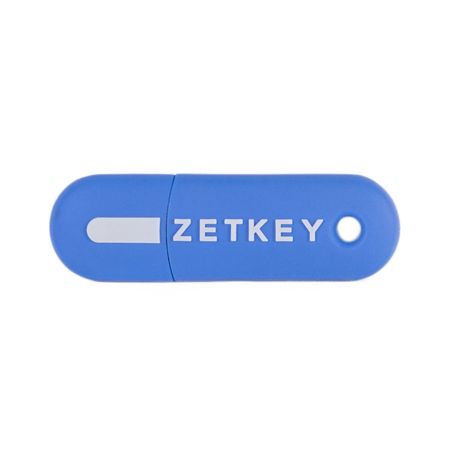New development of ZETKey

ZETKey is a miniature USB device that allows you to work with ZETLab programs without connecting ADC / DAC boards or spectrum analyzers. ZETKey is designed for:
- expansion of ZETLab software,
- autonomous work with ZETLab software,
- separation of access rights to ZETLab service programs.
Extension of ZETLab software
In addition to basic virtual instruments, such as a voltmeter, an oscilloscope, a narrowband spectrum, etc., which are part of ZETLab for any device, specialized programs are developed that fall into 3 types:
The solution of a certain problem, for example, the program “Withdrawal of frequency response”, “Diagnostics of bearings”. Such programs, as a rule, can be purchased only with spectrum analyzers, since require certain metrological characteristics.
Solutions in a certain area, for example, the program “Vibrometer” is indispensable in vibration diagnostic systems and in the analysis of seismic signals, and all types of strain gauges are carried out by one program “Tensometer”. Such programs are included in spectrum analyzers, strain gauges, seismic stations (depending on the type of device), and with ADC / DAC boards are purchased separately,
Multifunctional programs, for example, “Formula”, which in itself is a virtual laboratory in which you can perform arithmetic and mathematical operations with signals, measure signal parameters, perform filtering, create virtual signals of any shape. Similar programs are an option for all devices.
To extend the set of programs supplied with an already purchased device, ZETKey keys are provided in the ZETLab Special configuration.
Autonomous work with the virtual laboratory ZETLab
ZETKey keys also allow you to work with ZETLab programs completely without a connected recording device. Data can be transmitted over a network (for example, in educational laboratories, in distributed measuring systems) or work can be done in the mode of reproducing recorded signals. When the key is connected in the ZETLab Receiver configuration, the Data Client program is available for receiving signals via the network, but the set of programs on the PC will correspond to ZETLab Demo. When the key is connected in the ZETLab Base configuration, the software on the PC will fully correspond to the set of programs supplied with the purchased device (spectrum analyzer or ADC / DAC board), while programs can work with reproduced signals or signals transmitted over the network.
Access control
Devices such as spectrum analyzers or ADC / DAC modules are multifunctional. When different sensors are connected to them, it is necessary to adjust the measuring channels (specify the sensitivity of the sensor, units of measurement and other parameters), sometimes – change the device settings (for example, increase the sampling frequency of the ADC), calibrate some programs (such as the “strain gauge”) .
Unlike them, smart sensors do not need to be configured to work with them – all necessary parameters are set when the product is released and stitched in the memory of a measuring device such as ZET 7XXX. The main advantage of using intelligent sensors is that the output is transmitted to the finished data, which can be displayed directly on an oscilloscope or indicator, and you do not need to configure the device, channels, programs. Connection is made
But when replacing the primary transducer that is part of the intelligent sensor, or when changing its metrological characteristics, it is necessary to carry out a new configuration of the device.
Some ZETLab service programs can operate in different modes depending on the access rights. Connecting the device to the computer allows you to run such programs in the operator mode, while the user can not change its settings (except for some, for example, the name of the channel), but only to view the current settings.
If necessary, the ZET 7X7X device can grant the user the rights of a metrologist (in this mode, you can change the settings of the smart sensor), but most often for these purposes the ZETKey key is used, because This operation is usually carried out by the metrological service of the enterprise and it is necessary to exclude the possibility of changing the settings by the operator.
Protection from changing settings is also often necessary in automated measurement systems, where the measurement results directly depend on the parameters of the measuring devices and should not be changed by the operator during the operation of the system.
